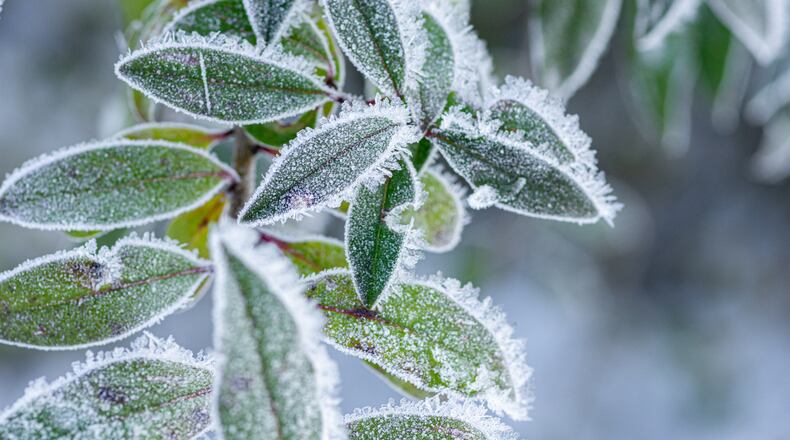Weather can lead to a variety of types of “cold” injuries. Winter cold injury is when the plants are dormant in the winter months, but the temperatures are drastically low, and specific plants don’t tolerate the low temperatures. This is direct low-temperature injury.
We experienced this last year with the winter damage to boxwood plants. If you recall, I wrote quite often this past spring about the problems we had with boxwood. One of the problems was winter cold damage to branches.
Winter also brings desiccation, frost heaving, sunscald, and frost cracks. Desiccation occurs on broadleaf evergreens when the ground is frozen, and the foliage loses moisture faster than the roots can take up water.
Frost heaving is when the ground freezes and thaws and pushes the roots up out of the ground, exposing them to cold injury.
Sunscald and frost cracks are similar and occur when daytime temperatures and the sun warms up the south side of thin-barked young trees, and nighttime temperatures drop back down below freezing. The result is damage to the inner bark or cracking or splitting of the bark.
So far, I have not seen any of the above damage and we won’t likely have the conditions for them to occur until we get back into the fall and next winter.
We are entering the time of the year when spring “cold” damages start to occur. Erratic spring weather leads to a variety of injuries to plants.
The most common and probably the biggest problem is frost or freeze damage to flowers and sometimes foliage. Frost and freeze damage are costly to those growing fruits.
Flowers are the most sensitive part of the plant, and many don’t tolerate frost or freezing temperatures. When strawberries, raspberries, peaches, apples, pears, and other spring-blooming fruits are in bloom, they need to be protected from a frost and/or freeze.
Extreme cold spring temperatures can also kill flower buds if they are in certain stages of development, resulting in crop failure.
Other types of spring cold injury occur when the temperatures warm up significantly and we get a lot of new, green growth pushing out, followed by a drastic drop in temperatures.
This happened in April 2012 when we had almost a week of warm weather, and lots of new green succulent growth, and it dropped down to 17F overnight. Not only flowers were damaged but also foliage on perennials, trees, and shrubs that had opened.
It’s always like this in the spring in Ohio. Every year. Every spring. The same question — what will happen to my plants? The same answer — we must wait and see.
Pamela Corle-Bennett is the state master gardener volunteer coordinator and horticulture educator for Ohio State University Extension. Contact her by email at bennett.27@osu.edu.
About the Author
